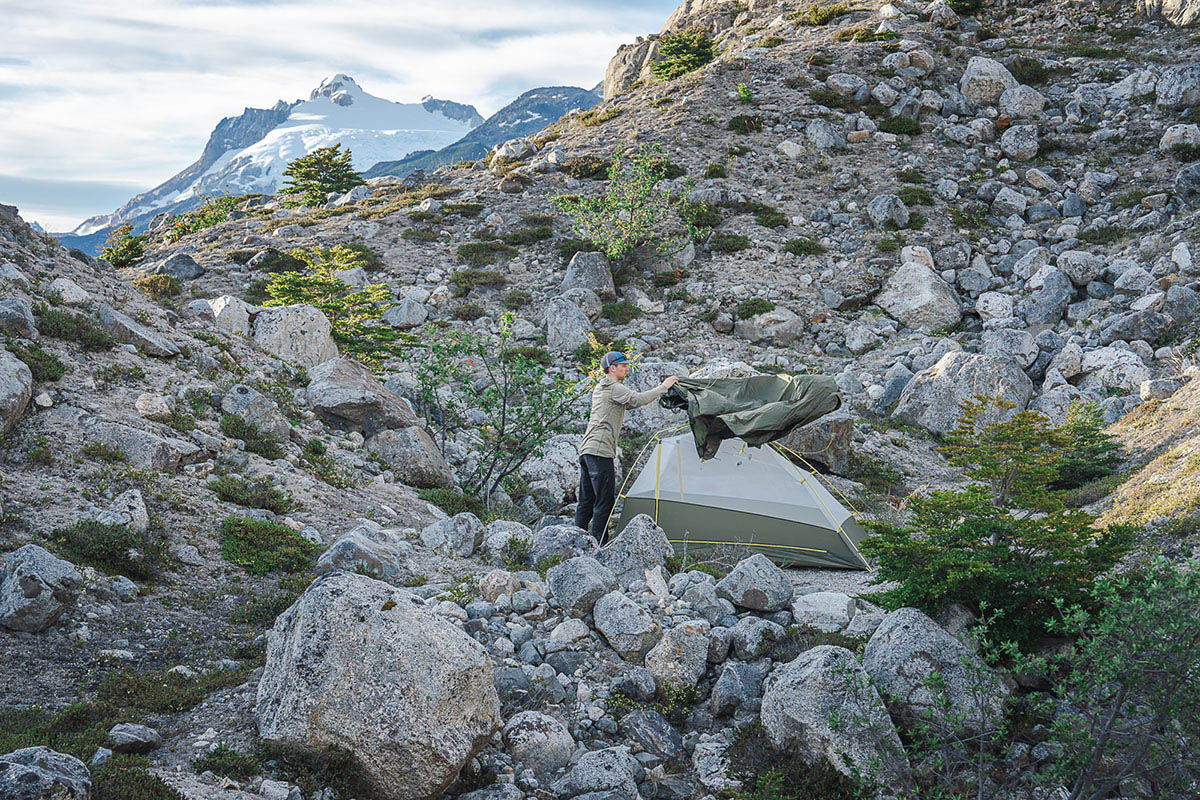
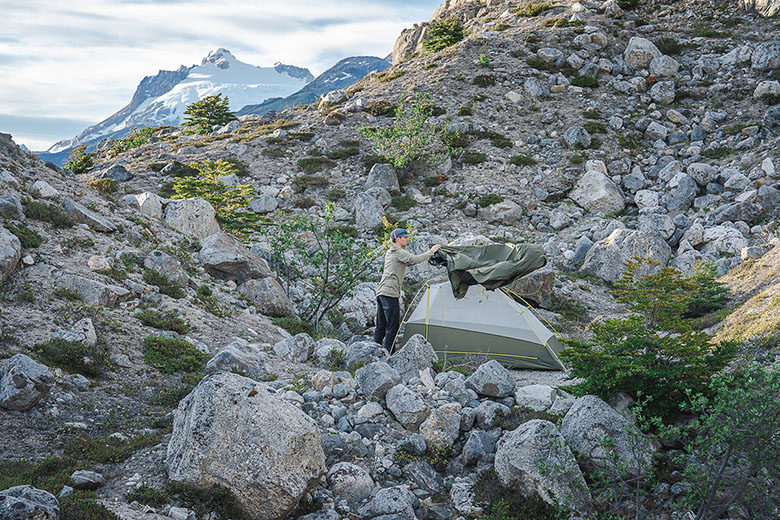
Price: $350
Packaged weight: 4 lb. 4 oz.
Floor area: 28 sq. ft.
Capacities: 2P, 3P
What we like: Strikes a nice balance between weight and durability; well priced for what you get.
What we don’t: Interior is noticeably cramped—we consider the two-person model best suited for solo backpackers.
See the Big Agnes Crag Lake SL2
Big Agnes specializes in quality backpacking tents, from streamlined ultralight models for ounce-counting minimalists to family-friendly designs that prioritize comfort and spaciousness. The Crag Lake falls somewhere in the middle, striking a good balance between weight, durability, and price for many recreational backpackers. After testing the tent on a trip to Patagonia, we came away disappointed by its cramped-feeling interior, but it’s a tough and otherwise well-sorted design at a solid value. Below are our thoughts on the Crag Lake SL2. To see how it stacks up to the competition, check out our full article on the best backpacking tents.
At 4 pounds 4 ounces all in, the Big Agnes Crag Lake SL2 isn’t a standout in the backpacking tent market but stacks up reasonably well to leading competitors. For reference, our favorite design this year, Big Agnes’ own Copper Spur HV UL2, weighs considerably less at 3 pounds 2 ounces but is far less durable and costs significantly more. Closer comparisons include REI’s Half Dome SL 2+, which is nearly identical to the Crag Lake at 4 pounds 3.5 ounces without the included 8-ounce footprint, and Big Agnes’ Own C Bar 2 (4 lb.).
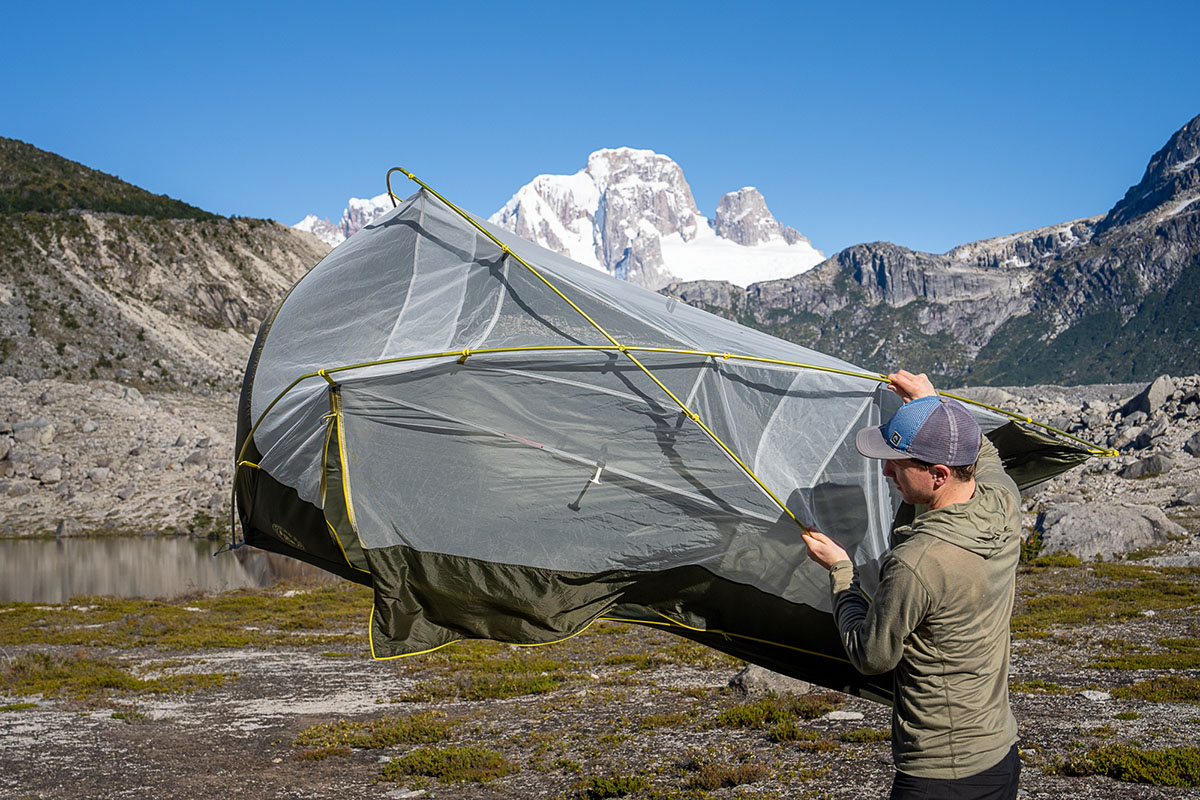
In terms of packability, the Crag Lake stuffs down to a reasonably compact 6 by 18.5 inches. For comparison, it’s slightly smaller than the Copper Spur (6 by 19.5 in.) and significantly less bulky than the Half Dome SL 2+ (7 by 20.5 in.). All in all, I had no issues fitting the Crag Lake in a full backpacking pack loaded down with five days’ worth of food and gear, plus some camera equipment that I was carrying for our photographer.
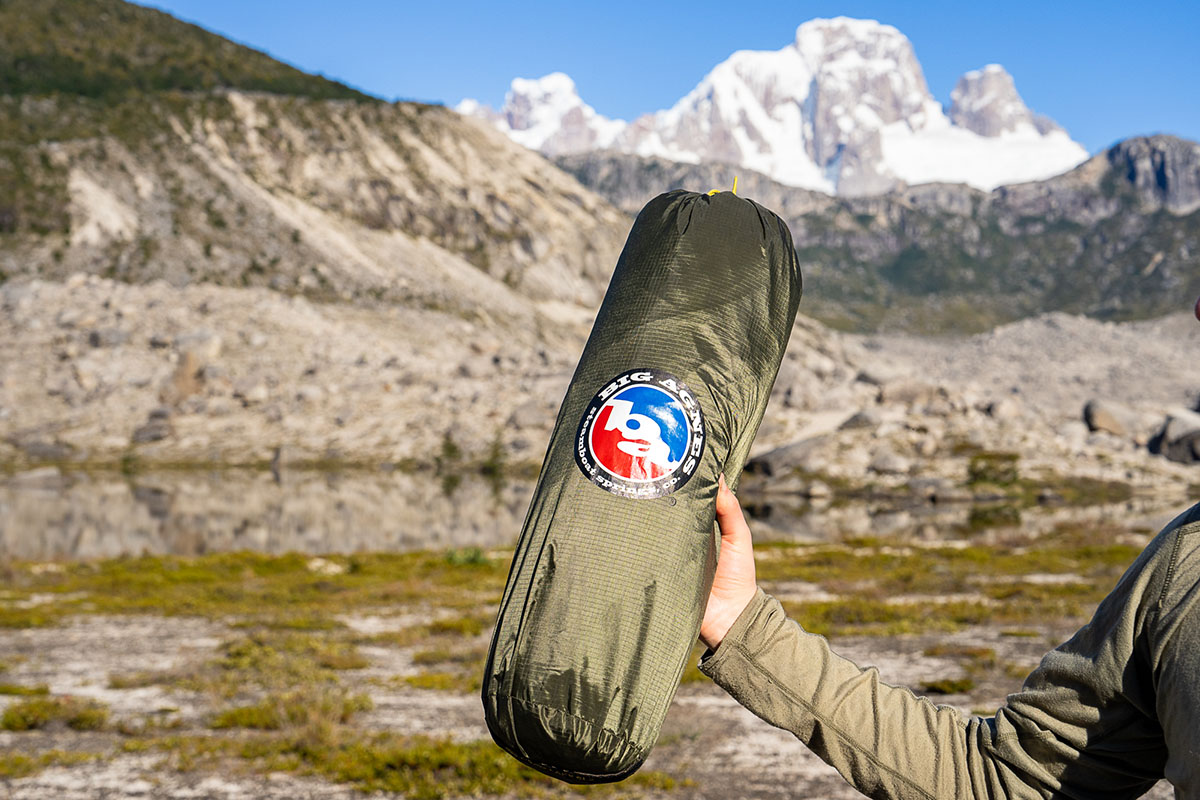
Without mincing words, the Crag Lake SL2 is surprisingly small and cramped inside. The biggest culprit is the X-shaped pole structure, which really compromises interior space. Another contributor is the tapered footprint, which measures 52 inches at the head but just 42 at the feet. If nightly comfort is a top priority, symmetrical designs are much more functional for two people to sleep in opposite directions (head to toe). Further, the tent’s sloping roof detracts from overall headroom—although the 42-inch peak height is fairly standard—and the length felt short for my 5’9” frame (it’s listed at 86 in. but felt much smaller). To be fair, there’s plenty of space for a single adult to sit upright and change, but it would be a very tight squeeze for two. If you plan to camp with a tentmate or even a dog, the three-person Crag Lake is worth the extra $50, in my opinion.
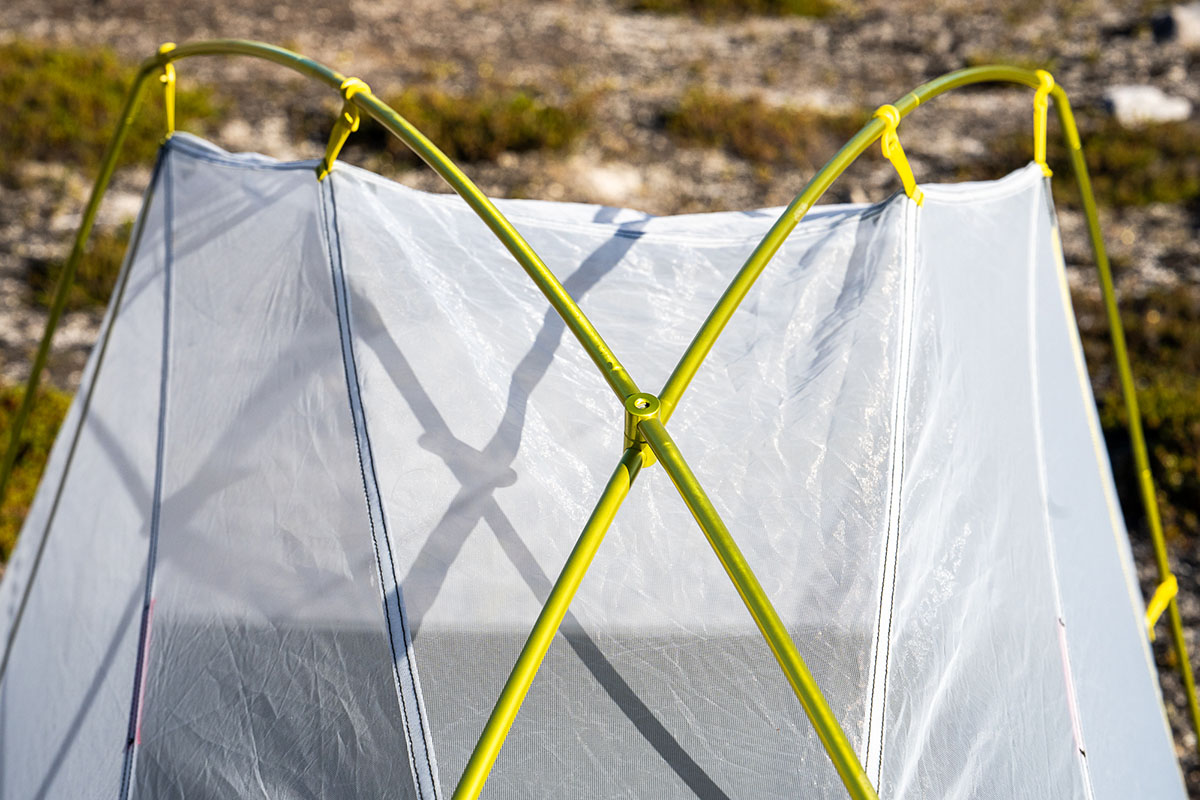
Big Agnes is one of the biggest names in backpacking, so it comes as little surprise that the Crag Lake is a well-built and outdoor-ready design. Despite its “superlight” designation, the tent uses tough and durable ripstop nylon throughout (including on the body, floor, and fly). Big Agnes doesn’t provide a denier (D) spec to delineate fabric thickness, but it’s noticeably more hardwearing than the brand’s Copper Spur tent, which is made with very thin (15 x 20D) materials. The Crag Lake’s smaller components are equally confidence-inspiring, from the smooth-operating zippers to the aluminum stakes and functional door tie-back system. My only complaint—and it’s an entirely subjective one—is that the tent’s drab color gives it a fairly dated appearance. Some might appreciate the woodsy tone, but I found the design pretty bland, especially when pitched next to Nemo’s modern Mayfly Osmo 2P that a coworker was testing.
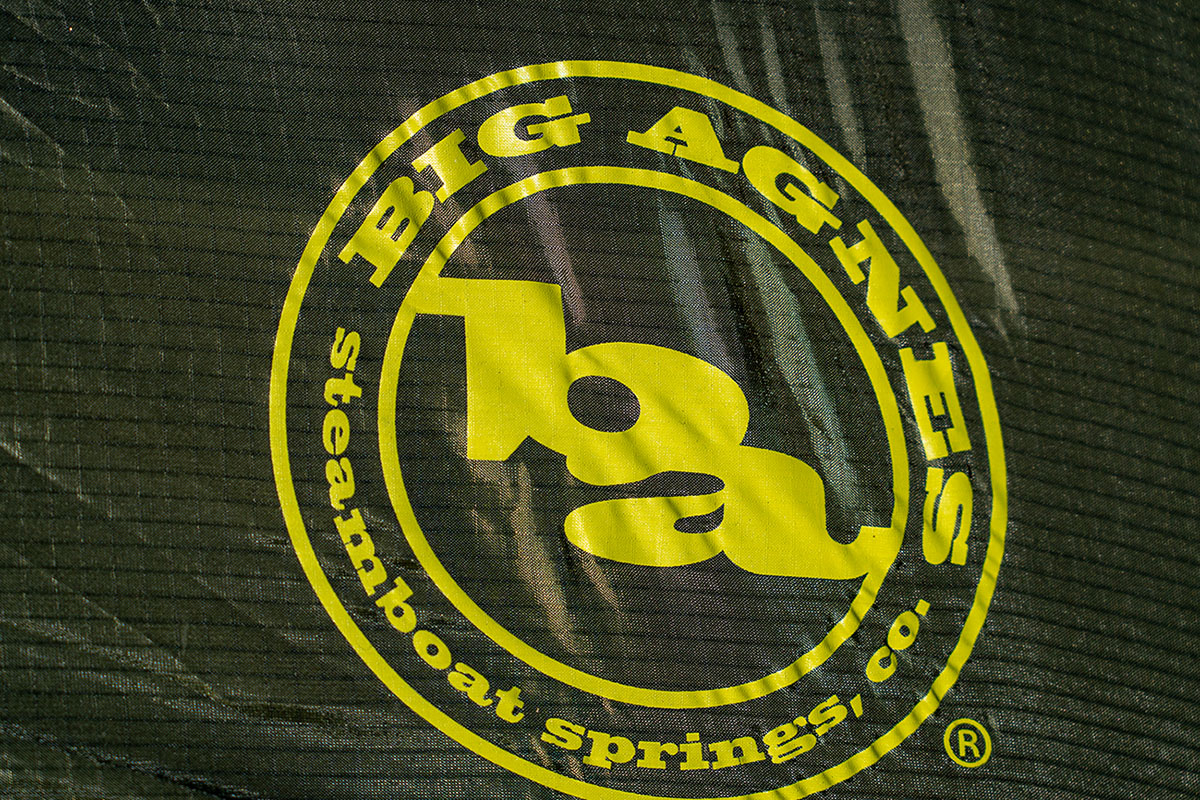
Protection is a bit of a mixed bag with the Crag Lake SL2. The most obvious downside is the tent’s tall shape and broad sides, which limit stability in high winds. I also found the rainfly prone to sagging a bit in moderate to heavy rain, although retightening the guylines and re-staking the vestibules mostly solved the issue. And there were some positives: The fly offers full coverage, has proven to be solidly waterproof, and boasts a two-sided zipper so you can open just the top one to peek outside during a storm. It’s a long reach to the bottom zipper when exiting the tent, but that’s not uncommon with vestibules that open at the center. I also appreciate that Big Agnes included a storm flap over the zipper to prevent water from pouring in when you open the door, as well as taped seams for added assurance. And when the weather lets up, it’s easy to secure both the fly and doors out of the way by rolling them back, which creates a big opening.
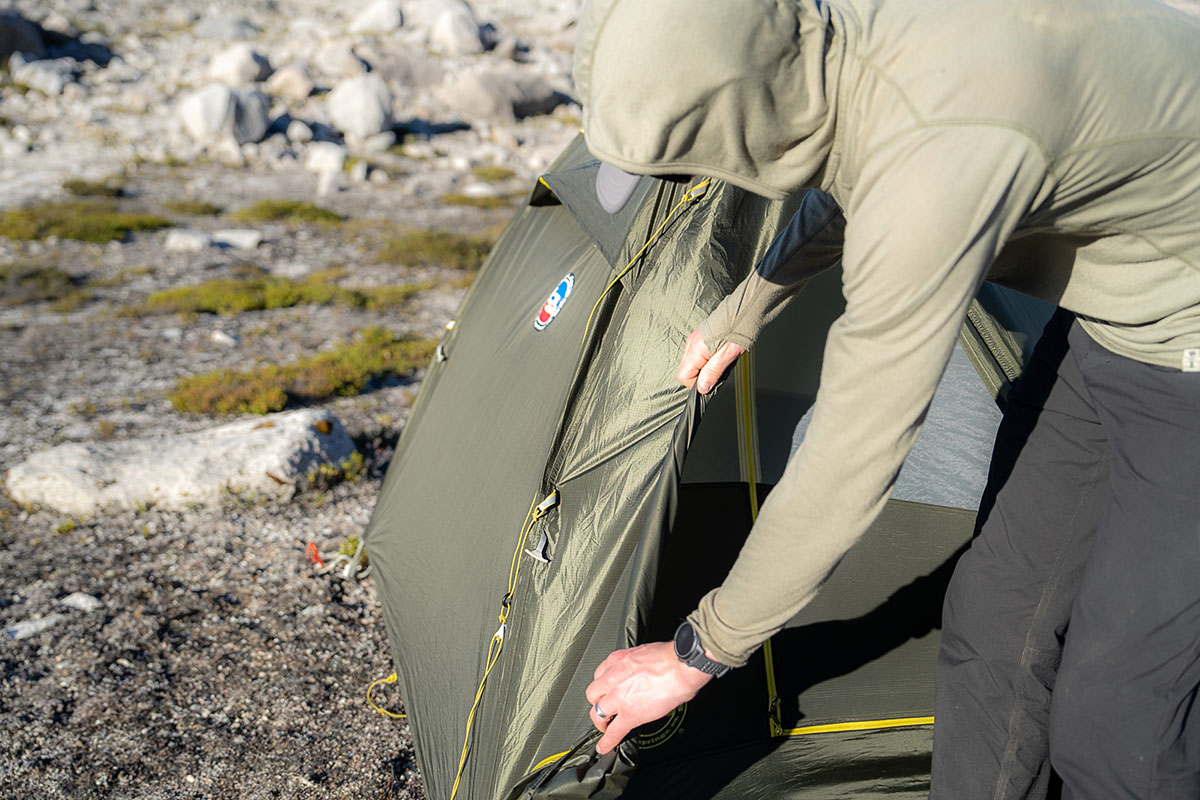
The Crag Lake’s mesh-heavy build makes it pretty well ventilated. There’s also good separation between the tent body and rainfly, along with a vent overhead. After a very humid night in Patagonia, the only sign of moisture was along the foot end of the tent, where my sleeping bag was touching the wall (a result of the Crag Lake’s fairly short length). By contrast, my coworker’s single-wall tent was dripping by morning.
Two-door-and-vestibule designs make it much easier to store gear and enter/exit your tent when camping with a partner. The Crag Lake’s two vestibules measure 9 square feet each, which is about average for a lightweight backpacking tent. In testing, I was easily able to stash my pack and hiking boots in one vestibule with plenty of room remaining to get in and out.
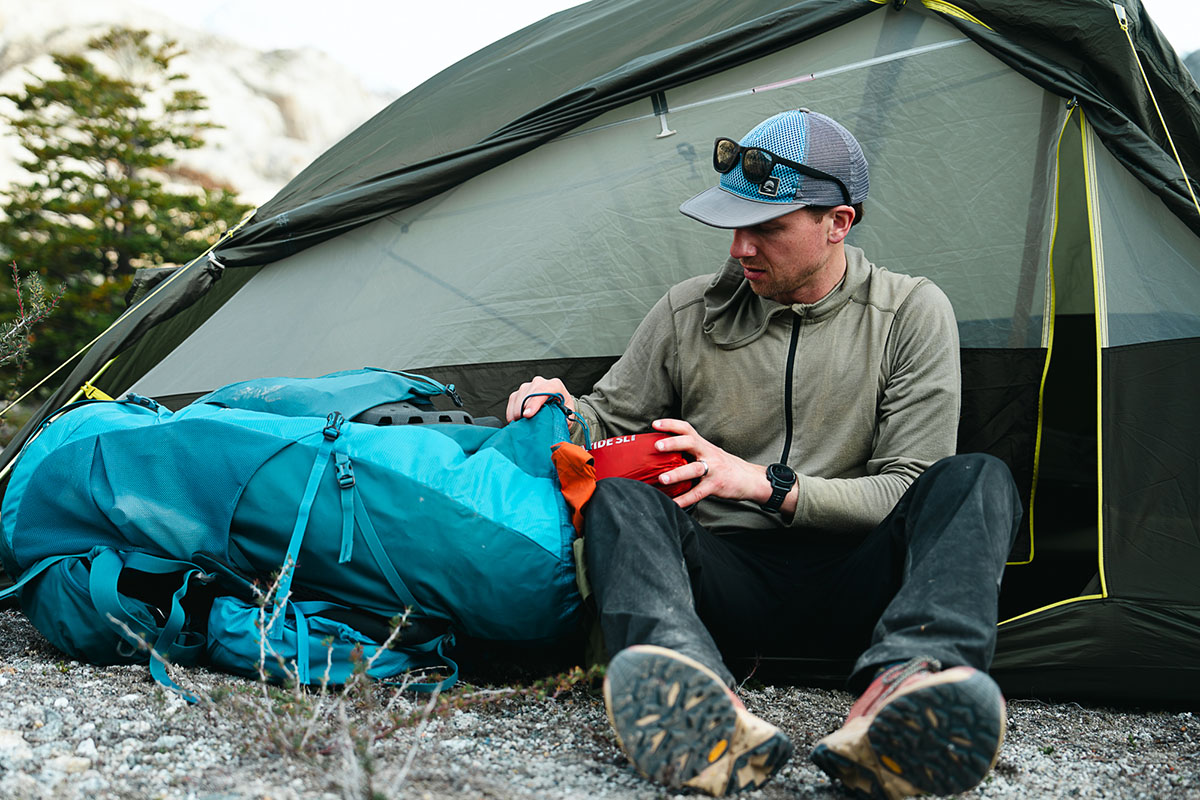
Along with functional vestibules, the Crag Lake comes well-equipped in the storage department with four total pockets. I especially like the two oversized mesh ceiling pockets, one of which spans the width of the tent at its widest point and is large enough to dry wet socks. The two mesh corner pockets (one on each side) are within reach when lying down and perfect for divvying up smaller items like a headlamp, Garmin inReach, and other necessities you might want to keep close at hand. All in all, I found the layout entirely practical. And for those with bigger storage needs, the tent is compatible with Big Agnes’ generously sized Gear Lofts.
Freestanding tents are generally very quick and easy to pitch, and that holds true for the Big Agnes Crag Lake SL2. Even on my first try, it was a cinch setting up the tent thanks to the color-coded pole ends and intuitive rainfly attachment. The tent does require guylines to get a taut pitch, but Big Agnes includes enough, along with 10 aluminum stakes. In the end, it’s a painless set-up process that’s easy to accomplish solo. Alternatively, it’s also possible to pitch the Crag Lake using only the fly, poles, and footprint (sold separately) to reduce weight.
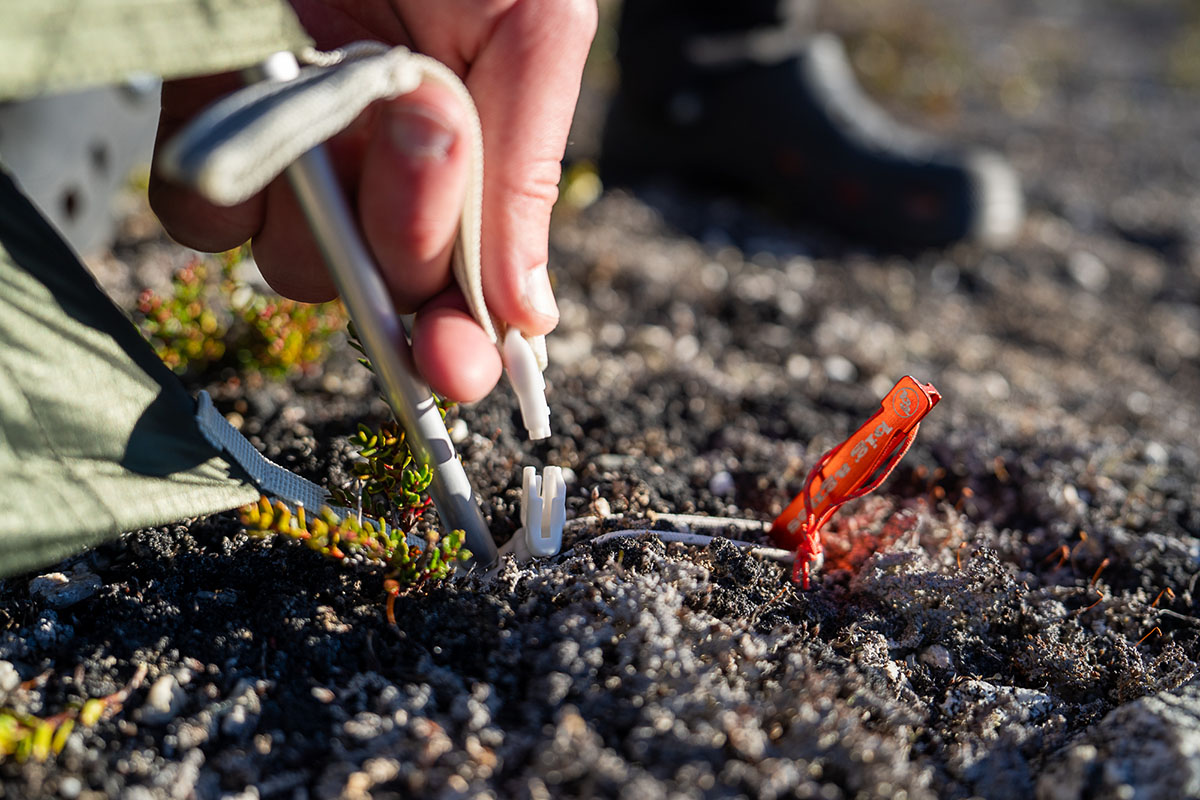
Like many outdoor brands, Big Agnes is putting a strong focus on sustainability of late. The Crag Lake is a good example with recycled nylon used for the rainfly, tent body, and floor. All three are coated with PFAS-free water-repellent coatings, which forgo the use of per- or polyfluorinated chemicals—“forever chemicals” known to be harmful to the environment. Finally, the seams are taped with solvent-free polyurethane tape that eschews PVC (an environmentally damaging plastic) and VOCs (short for “volatile organic compounds,” which are often emitted into the air during production).
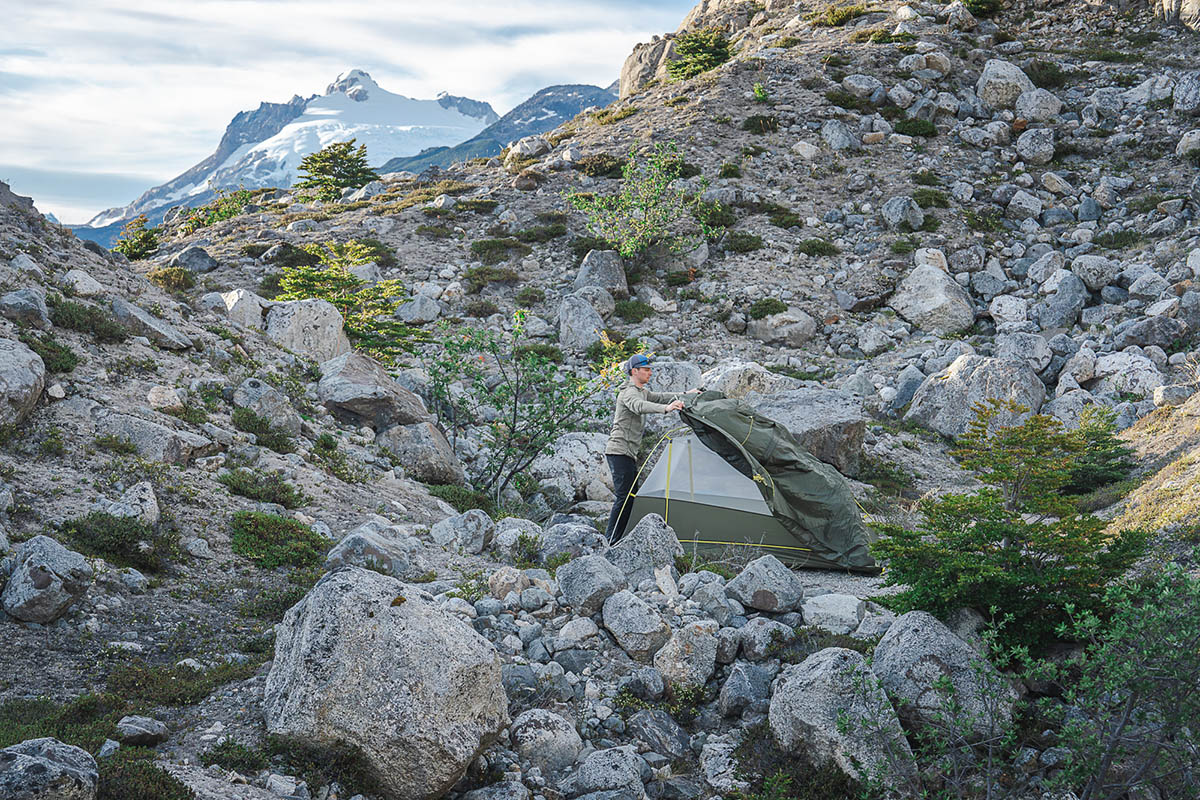
We brought the two-person version of the Crag Lake to Chile for testing, which costs $350 and clocks in at 4 pounds 4 ounces all in. Big Agnes also offers a larger three-person variation for $400, which is 8 ounces heavier, boasts an additional 10.5 square feet of floor area, and offers 2 inches of additional headroom. As we mentioned above, we found the two-person version noticeably cramped, so groups of two or more should consider stepping up to the larger model (especially if livability and comfort are priorities).
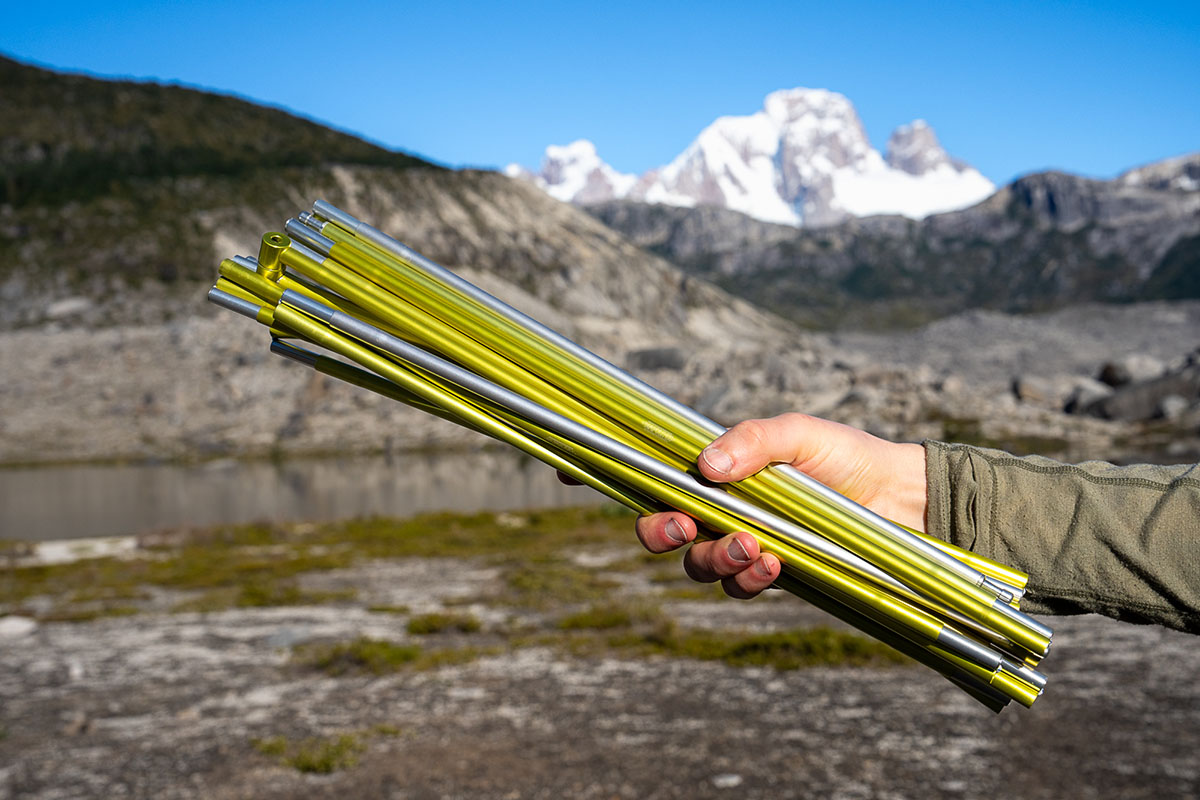
| Tent | Price | Weight | Floor | Area | Height | Door(s) | Capacities |
|---|---|---|---|---|---|---|---|
| Big Agnes Crag Lake SL2 | $350 | 4 lb. 4 oz. | Unavail. | 86 x 52/42 in. | 42 in. | 2 | 2, 3P |
| Big Agnes Copper Spur HV UL2 | $530 | 3 lb. 2 oz. | 15x20D | 88 x 52/42 in. | 40 in. | 2 | 1, 2, 3, 4P |
| Big Agnes C Bar 2 | $250 | 4 lb. | 68D | 86 x 52/42 in. | 41 in. | 2 | 2, 3P |
| REI Co-op Half Dome SL2+ | $349 | 4 lb. 11.5 oz. | 40D | 90 x 54 in. | 42 in. | 2 | 2, 3P |
| Durston X-Mid 2 | $280 | 2 lb. 6.4 oz. | 20D | 92 x 52 in. | 48 in. | 2 | 1, 2P |
The Crag Lake SL2 is a tough and reasonably priced backpacking tent, but it doesn’t really stand out in Big Agnes’ extensive lineup. That’s not the case with their Copper Spur HV UL2, which has been a staff favorite for years. Despite weighing over a pound less than the Crag Lake, the Copper Spur doesn’t skimp on comfort with a healthy 29 square feet of floor space and a more modern, high-volume pole structure that stretches the walls up and away. Importantly, Big Agnes managed to retain two doors and vestibules, good ventilation, and a full-coverage rainfly. But it’s not all good news: The Copper Spur uses delicate materials to keep weight low—you’ll need to be careful to avoid tears—and price goes up to a whopping $530 for the two-person model. We think it’s a no-brainer for avid backpackers who get out a lot, but the Crag Lake is a perfectly serviceable entry-level option (especially for infrequent solo hikers).
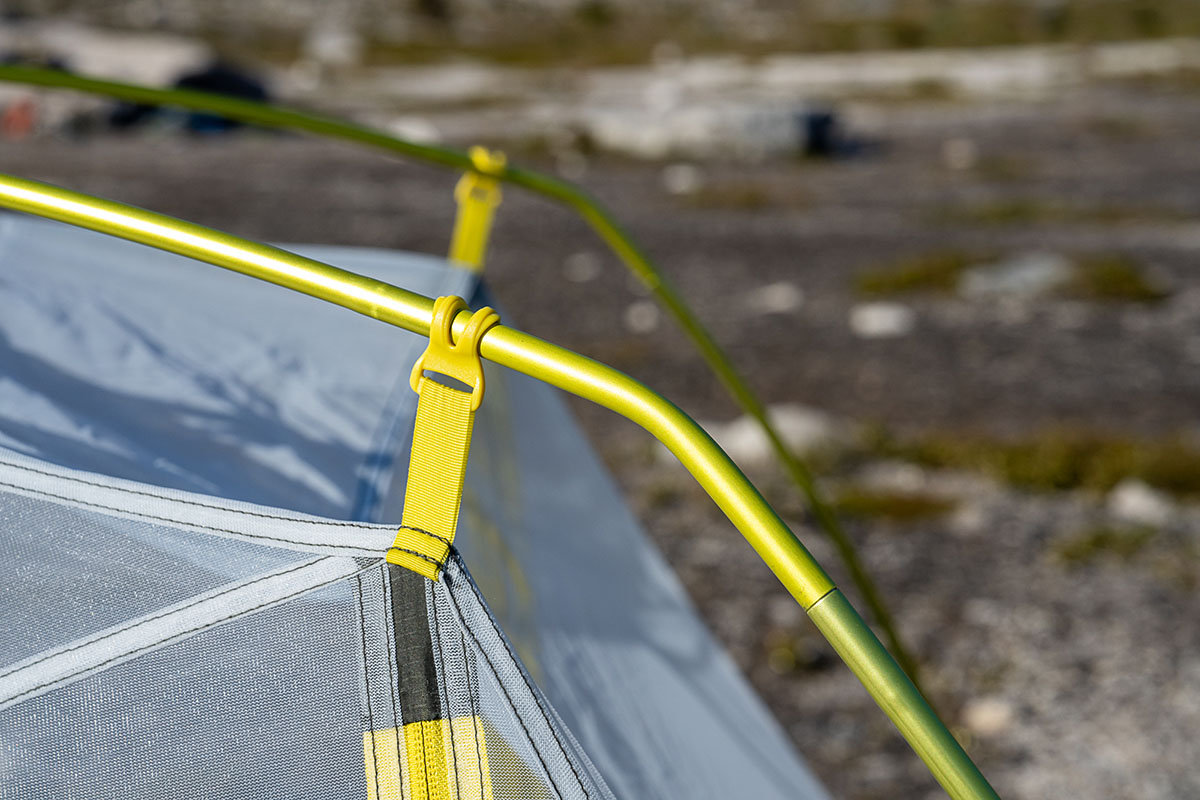
At the budget end, Big Agnes’ C Bar is a more minimalist alternative to the Crag Lake but will save you a substantial $100 for the two-person version. Reminiscent of their ultralight (and much pricier) Fly Creek, the C Bar has just one door and vestibule but otherwise stacks up similarly to the Crag Lake in terms of overall livability: The tents’ interior dimensions are nearly identical—the C Bar is shorter by an inch—including tapered roofs and floor areas. Given that both designs strike us as best suited for solo backpackers, we give the overall edge to the C Bar for its lower weight and price. If you plan to sleep with a tentmate, we’d advise spending up for the Crag Lake 3 for the additional door and vestibule.
Outside of Big Agnes’ lineup, we’re big fans of REI’s Half Dome SL 2+. For the same price as the Crag Lake, the Half Dome offers a sizable boost in livability with nearly 6 additional square feet of floor area, 4.5 more square feet of vestibule space, and a symmetrical footprint that makes it easier for two backpackers to sleep head to toe. It’s also quick and easy to set up, relatively durable, and includes a footprint for protecting the floor when needed (the Crag Lake’s compatible footprint will cost you an additional $60). The biggest drawbacks are weight and bulk, although leaving the REI’s footprint behind puts it within an ounce of the Crag Lake (packed size is still considerably bigger). If you don’t mind the added bulk, however, the Half Dome handily gets our vote over the Big Agnes.
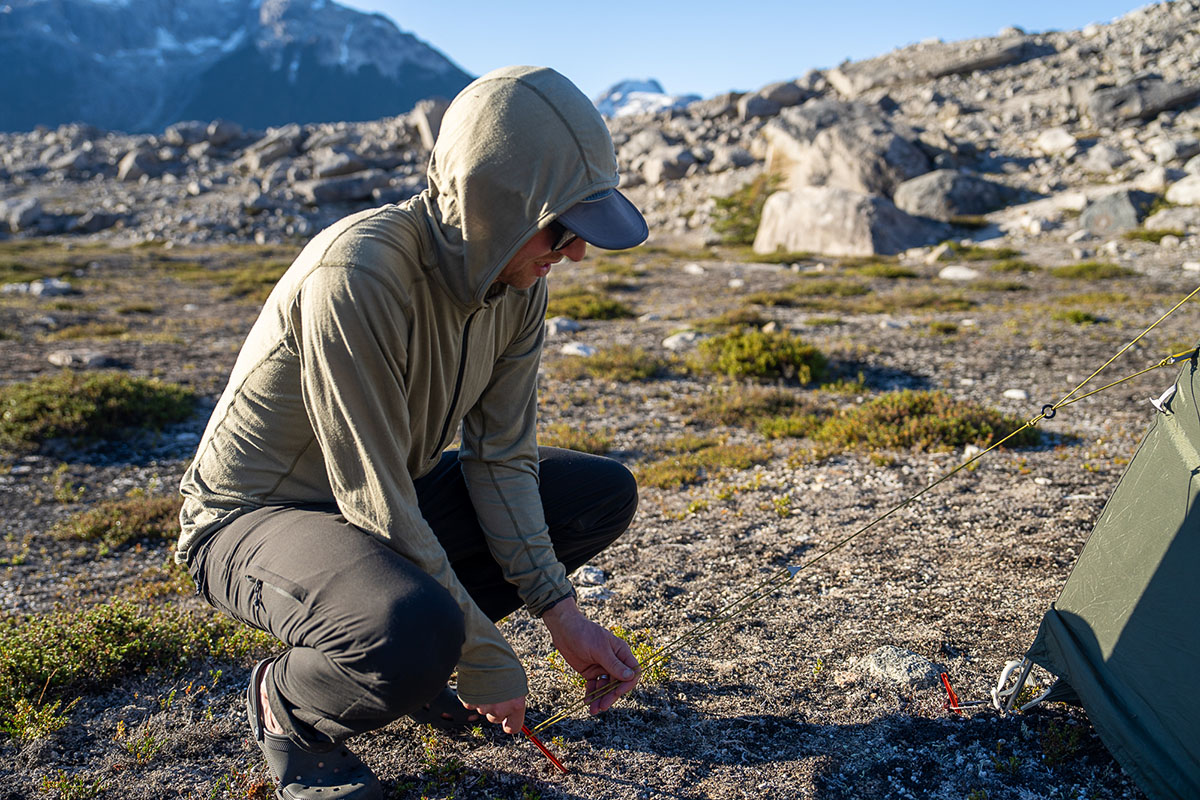
Our final alternative is a fun one: Durston’s X-Mid 2. Right away, we’ll note that the X-Mid is considerably more complex than the Crag Lake with a trekking pole-supported design that’s less intuitive and more difficult to set up. The advantage is a sizable reduction in weight (2 lb. 6.4 oz.) without needing to sacrifice durability or spaciousness. In fact, the X-Mid 2 has roomier dimensions throughout, from the 33.2-square-foot interior to the 48-inch peak height and 57.6 square feet of vestibule space. And perhaps most impressively, Durston managed to keep the cost remarkably low at $280. Unless the trekking pole substitution is a dealbreaker, we think the X-Mid is the better all-around design and value.